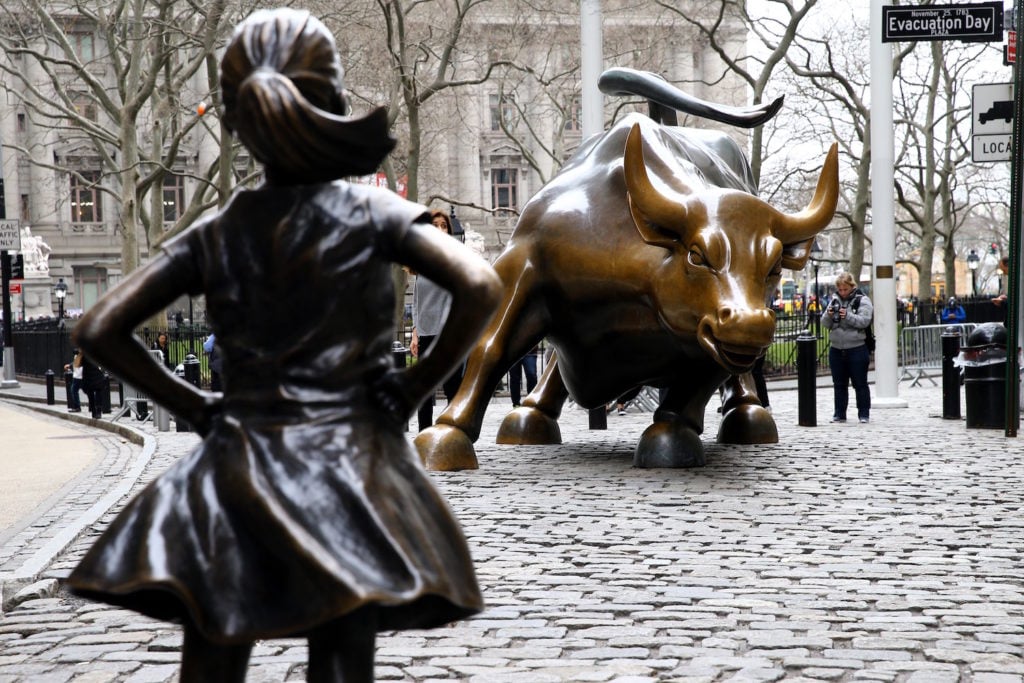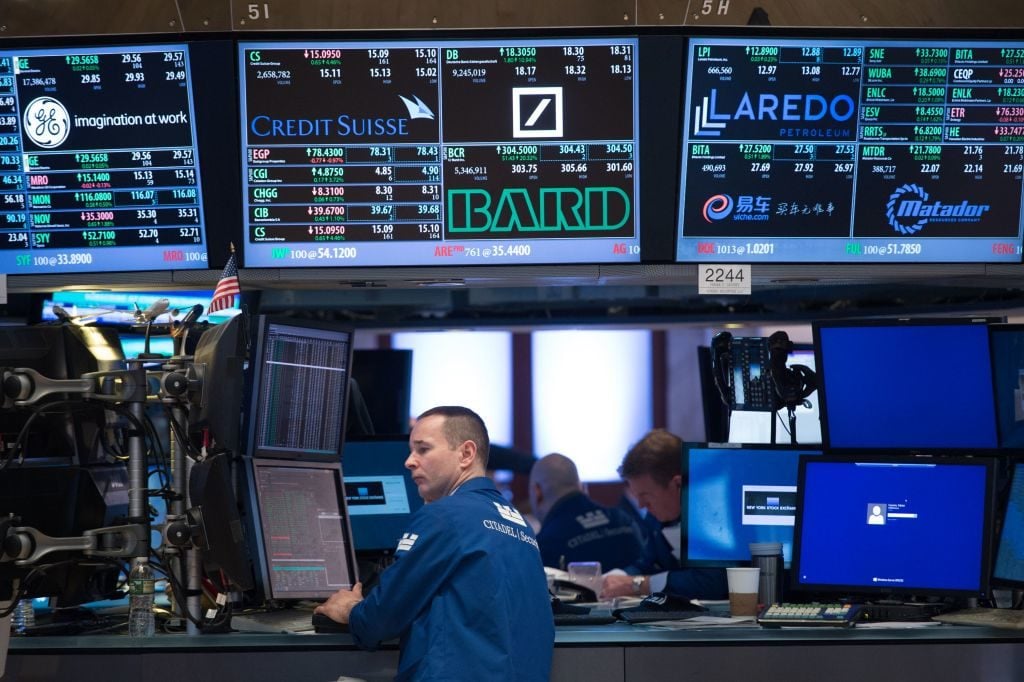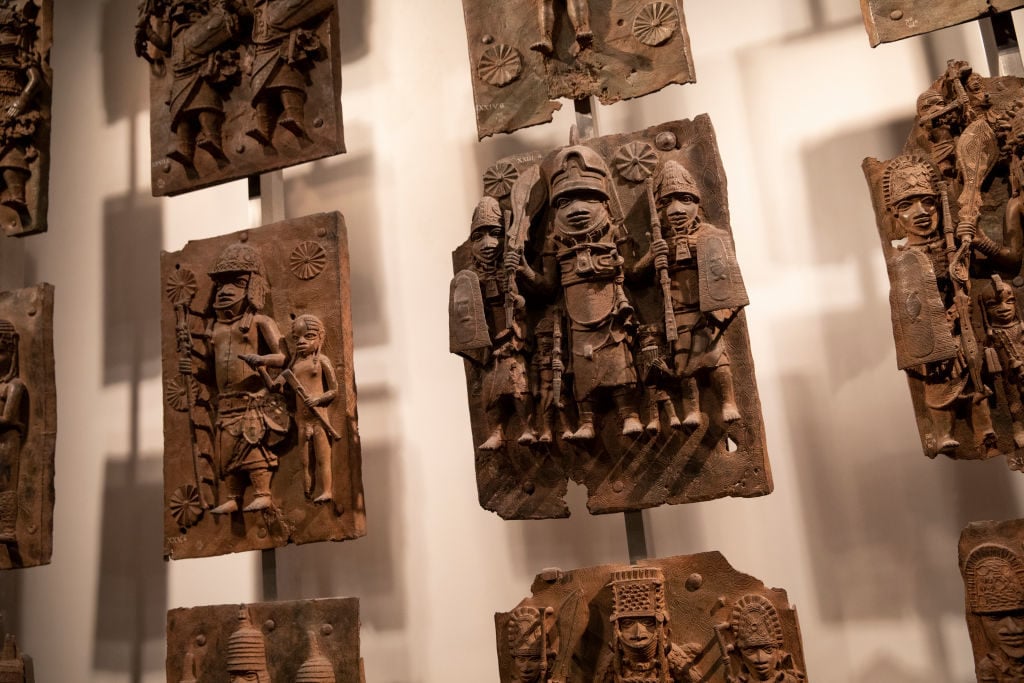Opinion
The Gray Market: Why Your Art Collection Isn’t Actually Beating the Stock Market (and Other Insights)
Our columnist retrieves what's often lost in art-as-investment talk and weighs in on resistance to the Savoy-Sarr restitution report.

Our columnist retrieves what's often lost in art-as-investment talk and weighs in on resistance to the Savoy-Sarr restitution report.

Tim Schneider

Every Monday morning, artnet News brings you The Gray Market. The column decodes important stories from the previous week—and offers unparalleled insight into the inner workings of the art industry in the process.
This week, two market stories with two central points each…
On Monday, the Wall Street Journal ran a story proclaiming that artwork outperformed all other asset classes from the beginning of 2018 through November, including such investment mainstays as index funds tracking the S&P 500 and US Treasury bonds. Which would be colossal news, if it reflected anything remotely resembling an educated view of the financial realities of art collecting.
Unfortunately, that’s simply not the case.
The confusion arrives courtesy of the Art 100 Index, a quantitative model by the analytics firm Art Market Research. Since details about the index and its methodology were scarce in the story, I got in touch with Art Market Research for more information.
According to a representative, the Art 100 tracks public auction sales of work by 100 artists from 17 countries across three centuries who are “chosen for being as well-known as Renoir, Warhol, and Picasso and traded in sufficient numbers to be indexable.” (The representative declined to provide a full list of artists in the index.) Results come from “22 leading auction houses” and are smoothed by the removal of buyer’s premiums, extreme prices, and seasonality, along with other statistical techniques.
By Art Market Research’s numbers, those artists’ works delivered a 10.6 percent return on investment through the first 11 months of 2018—a figure that gives the S&P’s negative 5.1 percent return over the same period all the appeal of plunging your whole arm into a warm compost bin.

A trader works on the floor of the New York Stock Exchange. (Photo: Bryan R. Smith/AFP/Getty Images)
However, it’s dangerous to treat this comparison as apples to apples… and Art Market Research actually agrees. Via email, the representative acknowledged that “creating indices on the art market will never mirror financial indices for obvious reasons—lack of liquidity, seasonality, etc.” Apart from those factors, I think two others deserve some unpacking. (The representative declined to comment on either.)
The first key drawback of the Art 100 Index (and any similar model, including one that my employer, artnet, discontinued several years ago) is that it implies the costs and benefits of holding artwork are the same as the costs and benefits of holding immaterial assets like stocks or bonds. But like the notion that you can effectively camouflage male-pattern baldness with a substance you spray out of a can, this is just a slim fiction for sales purposes.
Unlike stocks, bonds, and other immaterial financial assets, artwork and collectibles demand that you regularly pay what are called carrying costs—expenses necessary to keep the asset in your possession.
A share of stock is just an idea. It’s made “real” by an entry in an issuer’s ledger and a certificate in the shareholder’s records—no different than the records memorializing ownership of a conceptual artwork. Since shares have no serious physical form, preserving one share is no more costly than preserving 100.
Obviously, this is not the case for traditional artworks. Each one is a tangible object that needs to be kept in pristine condition, especially if you want to resell it at a profit later. So owning 100 paintings is vastly more expensive than owning one.
This doesn’t just require paying one-time fees for proper framing, packing, crating, and shipping to a secure location. It requires paying monthly fine-art insurance premiums (unless you’re a reckless gambler) and fine-art storage fees (unless you live in a massive, hyper-secure, climate-controlled compound).
Those costs quickly mount into the thousands of dollars for any blue-chip collector. Which, in turn, means that your art “investments” are hemorrhaging real cash every 30 days.

Your art collection is probably making less of this than you think, according to our columnist.
The second key difference is that stocks pay dividends. For the uninitiated, dividends are a tiny fraction of a company’s profits or cash reserves, which get distributed to shareholders at intervals as a return on their investment. The higher the number of shares an investor owns, the higher the total dividend they get paid.
Remember, share prices in the financial markets are more about what buyers and sellers think a company will be worth later than how it’s actually performing in real terms right now. (This is why Netflix’s share price recently topped Comcast’s, even though Netflix only made $550 million in profit in 2018 versus Comcast’s $22 billion.) So even if a company’s share price declines in the financial markets, it can still pay dividends to shareholders.
Even better, investors can choose to re-invest every new dividend into the same stock, automatically increasing the size and value of their holdings without paying any new costs.
But if you own, say, a Picasso portrait of Dora Maar, she doesn’t reach out of the painting and hand you $50 every few months. And even if she did, you couldn’t hand it right back to increase the size (and thus, value) of the canvas.
All of the above means that comparing straight-up annual returns for an S&P 500 index fund ignores reality. Incidentally, past artnet News contributor Felix Salmon just gamed out the consequences of this comparison a few days after the WSJ post:
Over the past 50 years, the level of the S&P 500 has risen by 2,100%. So if you bought a painting in 1968 for $1,000 and it’s now worth $45,000, that’s up 4,400% and you’ve doubled the performance of the S&P, right? Wrong. The S&P has been throwing off dividends all that time. If you didn’t need income from your painting, you didn’t need income from the same money invested in stocks. And if you’d reinvested your dividends, you’d actually be up 9,300% since 1968.
Obviously, it’s still possible to make money—and sometimes, a lot of money—by reselling art. But it’s a hugely different process from Wall Street’s. (The Art Market Research rep was keen to point out that its indices “are typically used for retrospective valuations. As such, we do not offer investment advice.”) If we refuse to acknowledge the difference between making money off of art and stock, we’re not having an honest conversation about art “investment.”

Emmanuel Macron and Benin’s President, Patrice Talon. Photo by Etienne Laurent/AFP/Getty Images.
On Wednesday, The Art Newspaper relayed the collective ire of a group of French antiquities dealers over the Savoy-Sarr restitution report, a study commissioned by French President Emmanuel Macron to determine what should be done about the nation’s holdings of African artifacts acquired “without consent” during its colonial era. The dealers, all members of France’s National Syndicate of Antiquarians (SNA), are agitating for a meeting with culture minister Franck Riester over the fact that they were not consulted by the report’s authors, French art historian Bénédicte Savoy and Senegalese economist Felwine Sarr, before the duo concluded France should return potentially thousands of objects to African nations.
As fate would have it, though, a strong rebuttal for every one of the dealers’ complaints emerged elsewhere simultaneously. Also on Wednesday, the New York Times published excerpts from a roundtable discussion between critic Jason Farago and three arts figures who loudly applaud the Savoy-Sarr report’s findings: acclaimed artist Toyin Ojih Odutola, Senegalese philosopher and Columbia professor Souleymane Bachir Diagne, and French art historian and Yale University associate professor Cécile Fromont.
Together, the TAN and Times pieces foreground just how radically many professionals in the arts will need to change if we ever hope to have ethical museums and/or an ethical trade of antiquities. Even more importantly, they do so by making it plain that the debate is ultimately about the collision between justice and self-interest.
This post would swell to Infinite Jest length if I addressed every point-counterpoint, so instead, I’ll focus on what I see as the two most meaningful. First up is this blast from Anthony JP Meyer, described as “an SNA board member and dealer of Oceanic and Eskimo art who belongs to a group of 25 experts who purchase pieces for the Musée du Quai Branly-Jacques Chirac,” which owns a staggering proportion of the objects addressed in the Savoy-Sarr report:
If these pieces had not become so expensive over the years, nobody would want them back.
So by this logic, if a coven of Scottish warlocks joined up tomorrow and used the power of sorcery to teleport the Eiffel Tower to Glasgow, the French should only be bothered by the loss of tourism revenue. Because financial value is the only kind of value.
Cécile Fromont expressed a different point of view in the Times piece. She had the following to say about the Macron-endorsed return of 26 sculptures seized centuries ago by the French as war plunder from Benin:
French national collections are central to the education of the citizen. That’s what the Louvre was meant to do: create the French citizen. So if it’s that important for France, you have to be really hypocritical to say that it’s not equally important for the children of Benin.

Plaques that form part of the Benin Bronzes at The British Museum. Photo by Dan Kitwood/Getty Images.
Second, the TAN story leaves behind the SNA to broadcast the anger of Alexandre Giquello, an auctioneer at Paris’s Binoche et Giquello. He posits that the word “restitution” should have no place in the current conversation. TAN translates his view as being that the “French salvaged, purchased, or received as bestowals many works of art” during the colonial period. In other words, it wasn’t all looted—an argument also made by the Quai Branly’s director last fall.
Yet Toyin Ojih Odutola and Souleymane Bachir Diagne both point out that even many, if not all, of these transactions essentially happened under duress. Here’s Diagne:
To what degree can you have consent within a colonial context? Michel Leiris, in “Phantom Africa” [from 1934], tells the story of ethnologists who wanted these sacred objects; and then out of guilt they paid a few francs. Technically, they “bought” them, but we see what buying means.
Upton Sinclair said it best: It is difficult to get a man to understand something when his salary depends on not understanding it. If the French government follows through on the recommendations in the Savoy-Sarr report, it threatens the livelihoods of many French dealers and museum professionals. No wonder there’s some resistance to the study’s conclusions.
The question, though, is whether Macron and other lawmakers are willing to put ethics ahead of economics. And given the precedent their decision will set, the African antiquities market won’t be all that is shaped by the answer.
[The Art Newspaper | The New York Times]
That’s all for this week. ‘Til next time, remember: It’s easy to say, “Money isn’t everything”—until you stop making it.